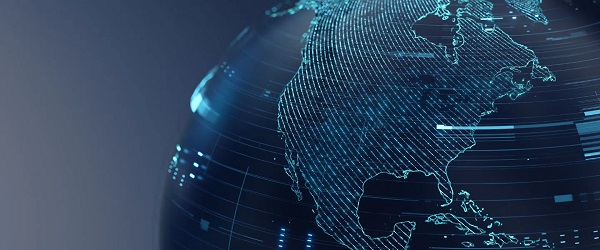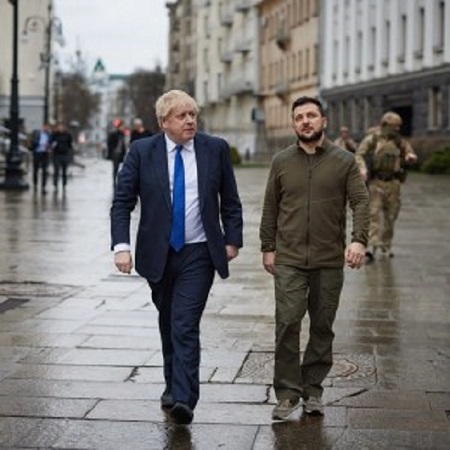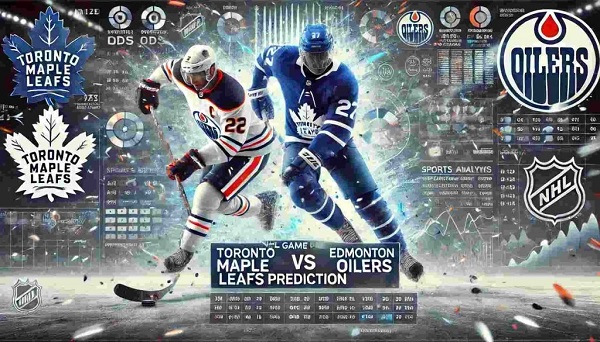Alberta
Province of Alberta reaching out to the rest of Canada for skilled workers

Alberta is calling again
A second Alberta is Calling campaign is launching to attract more skilled workers from across Ontario and Atlantic Canada.
Alberta’s economy continues to grow and diversify, creating rewarding jobs across industries and the province, including in high-demand sectors like skilled trades, health care, food service and hospitality, accounting, engineering and technology. Alberta workers continue to have the highest earnings across all provinces. As more jobs are created, businesses need more skilled workers.
In summer 2022, Alberta’s government launched the Alberta is Calling campaign to help address labour shortages across industries throughout the province. The first campaign targeted Canadians living in Toronto and Vancouver, while this second campaign turns its attention to Canadians living in the Maritimes and parts of Ontario, including London, Hamilton, Windsor and Sudbury.
The campaign highlights Alberta’s economic advantages, including the booming technology and innovation sector as well as offering the highest weekly earnings and lowest taxes in Canada. In addition, the campaign again promotes lifestyle attractions including Calgary, North America’s most liveable city, and access to world-famous mountains and parks for year-round hiking, skiing, biking, and more than 300 days of sunshine per year.
“As Alberta continues to create jobs, attract investment and diversify its economy, we are once again putting out a call for skilled workers to join our great province and appreciate the quality of life that Alberta has to offer. It is the Renewed Alberta Advantage, and I encourage more people to experience it for themselves.”
“Since last summer, nearly 70,000 individuals have moved here, the largest inflow of people we have seen in two decades. Between opportunity and quality of life, Alberta has a fantastic value proposition and the Alberta is Calling campaign has helped to share this message. We look forward to welcoming even more Canadians to Alberta soon.”
“Alberta’s vibrant and diverse restaurant sector is one of the province’s largest employers. However, coming out of the pandemic there are almost 18,000 vacancies in the restaurant sector for vital roles like managers, chefs and prep cooks. That is why Restaurants Canada is pleased to support the relaunched Alberta is Calling campaign.”
“What a great time for people to pursue careers in the trades in Alberta. Women Building Futures supports women seeking new career opportunities to get quality pre-apprenticeship training for exciting careers in the inclusive workplaces WBF Employers of Choice create.”
To learn more about the opportunities and advantages of living in Alberta, visit albertaiscalling.ca.
Quick facts
- The new phase of Alberta is Calling is launching in:
- Atlantic Canada
- St. John’s, N.L.; Charlottetown, P.E.I.; Moncton and Saint John, N.B.; and Halifax, N.S.
- Ontario
- Hamilton, London, Windsor, Sudbury, Sault Ste. Marie, North Bay, Chatham, Timmins and Cornwall
- Atlantic Canada
- In 2022, Alberta saw the highest employment growth in the country.
- Alberta workers continue to have the highest weekly earnings of any provinces, at $1,268 (Statistics Canada, December 2022).
- Alberta families earned a median after-tax income of $104,000 in 2020, which is more than $7,000 higher than Ontario.
- Alberta families generally pay lower personal taxes (for 2022, considering annual family incomes of $75,000, $150,000 and $300,000).
- Alberta saw the highest net interprovincial migration in Canada, at 19,285 people, in the third quarter of 2022.
- According to Alberta’s Short-Term Employment Forecast, high and moderately high-demand occupations include:
- restaurant and food service managers
- software engineers and designers
- web designers and developers
- transport truck drivers
- registered nurses and registered psychiatric nurses
- accounting technicians and bookkeepers
- shippers and receivers
Alberta
Keynote address of Premier Danielle Smith at 2025 UCP AGM

Alberta
Net Zero goal is a fundamental flaw in the Ottawa-Alberta MOU

From the Fraser Institute
By Jason Clemens and Elmira Aliakbari
The challenge of GHG emissions in 2050 is not in the industrial world but rather in the developing world, where there is still significant basic energy consumption using timber and biomass.
The new Memorandum of Understanding (MOU) between the federal and Alberta governments lays the groundwork for substantial energy projects and infrastructure development over the next two-and-a-half decades. It is by all accounts a step forward, though, there’s debate about how large and meaningful that step actually is. There is, however, a fundamental flaw in the foundation of the agreement: it’s commitment to net zero in Canada by 2050.
The first point of agreement in the MOU on the first page of text states: “Canada and Alberta remain committed to achieving net zero greenhouse gas emissions by 2050.” In practice, it’s incredibly difficult to offset emissions with tree planting or other projects that reduce “net” emissions, so the effect of committing to “net zero” by 2050 means that both governments agree that Canada should produce very close to zero actual greenhouse gas (GHG) emissions. Consider the massive changes in energy production, home heating, transportation and agriculture that would be needed to achieve this goal.
So, what’s wrong with Canada’s net zero 2050 and the larger United Nations’ global goal for the same?
Let’s first understand the global context of GHG reductions based on a recent study by internationally-recognized scholar Vaclav Smil. Two key insights from the study. First, despite trillions being spent plus international agreements and regulatory measures starting back in 1997 with the original Kyoto agreement, global fossil fuel consumption between then and 2023 increased by 55 per cent.
Second, fossil fuels as a share of total global energy declined from 86 per cent in 1997 to 82 per cent in 2022, again, despite trillions of dollars in spending plus regulatory requirements to force a transition away from fossil fuels to zero emission energies. The idea that globally we can achieve zero emissions over the next two-and-a-half decades is pure fantasy. Even if there is an historic technological breakthrough, it will take decades to actually transition to a new energy source(s).
Let’s now understand the Canada-specific context. A recent study examined all the measures introduced over the last decade as part of the national plan to reduce emissions to achieve net zero by 2050. The study concluded that significant economic costs would be imposed on Canadians by these measures: inflation-adjusted GDP would be 7 per cent lower, income per worker would be more than $8,000 lower and approximately 250,000 jobs would be lost. Moreover, these costs would not get Canada to net zero. The study concluded that only 70 per cent of the net zero emissions goal would be achieved despite these significant costs, which means even greater costs would be imposed on Canadians to fully achieve net zero.
It’s important to return to a global picture to fully understand why net zero makes no sense for Canada within a worldwide context. Using projections from the International Energy Agency (IEA) in its latest World Energy Outlook, the current expectation is that in 2050, advanced countries including Canada and the other G7 countries will represent less than 25 per cent of global emissions. The developing world, which includes China, India, the entirety of Africa and much of South America, is estimated to represent at least 70 per cent of global emissions in 2050.
Simply put, the challenge of GHG emissions in 2050 is not in the industrial world but rather in the developing world, where there is still significant basic energy consumption using timber and biomass. A globally-coordinated effort, which is really what the U.N. should be doing rather than fantasizing about net zero, would see industrial countries like Canada that are capable of increasing their energy production exporting more to these developing countries so that high-emitting energy sources are replaced by lower-emitting energy sources. This would actually reduce global GHGs while simultaneously stimulating economic growth.
Consider a recent study that calculated the implications of doubling natural gas production in Canada and exporting it to China to replace coal-fired power. The conclusion was that there would be a massive reduction in global GHGs equivalent to almost 90 per cent of Canada’s total annual emissions. In these types of substitution arrangements, the GHGs would increase in energy-producing countries like Canada but global GHGs would be reduced, which is the ultimate goal of not only the U.N. but also the Carney and Smith governments as per the MOU.
Finally, the agreement ignores a basic law of economics. The first lesson in the very first class of any economics program is that resources are limited. At any given point in time, we only have so much labour, raw materials, time, etc. In other words, when we choose to do one project, the real cost is foregoing the other projects that could have been undertaken. Economics is mostly about trying to understand how to maximize the use of limited resources.
The MOU requires massive, literally hundreds of billions of dollars to be used to create nuclear power, other zero-emitting power sources and transmission systems all in the name of being able to produce low or even zero-emitting oil and gas while also moving to towards net zero.
These resources cannot be used for other purposes and it’s impossible to imagine what alternative companies or industries would have been invested in. What we do know is that workers, entrepreneurs, businessowners and investors are not making these decisions. Rather, politicians and bureaucrats in Ottawa and Edmonton are making these decisions but they won’t pay any price if they’re wrong. Canadians pay the price. Just consider the financial fiasco unfolding now with Ottawa, Ontario and Quebec’s subsidies (i.e. corporate welfare) for electric vehicle batteries.
Understanding the fundamentally flawed commitment to Canadian net zero rather than understanding a larger global context of GHG emissions lays at the heart of the recent MOU and unfortunately for Canadians will continue to guide flawed and expensive policies. Until we get the net zero policies right, we’re going to continue to spend enormous resources on projects with limited returns, costing all Canadians.
-

 National2 days ago
National2 days agoAlleged Liberal vote-buying scandal lays bare election vulnerabilities Canada refuses to fix
-

 Alberta20 hours ago
Alberta20 hours agoNet Zero goal is a fundamental flaw in the Ottawa-Alberta MOU
-

 Food20 hours ago
Food20 hours agoCanada Still Serves Up Food Dyes The FDA Has Banned
-

 Addictions2 days ago
Addictions2 days agoThe Death We Manage, the Life We Forget
-

 Crime2 days ago
Crime2 days agoVancouver police seize fentanyl and grenade launcher in opioid-overdose crisis zone
-

 Daily Caller2 days ago
Daily Caller2 days agoJohn Kerry Lurches Back Onto Global Stage For One Final Gasp
-

 National1 day ago
National1 day agoEco-radical Canadian Cabinet minister resigns after oil deal approved
-

 Addictions20 hours ago
Addictions20 hours agoManitoba Is Doubling Down On A Failed Drug Policy











